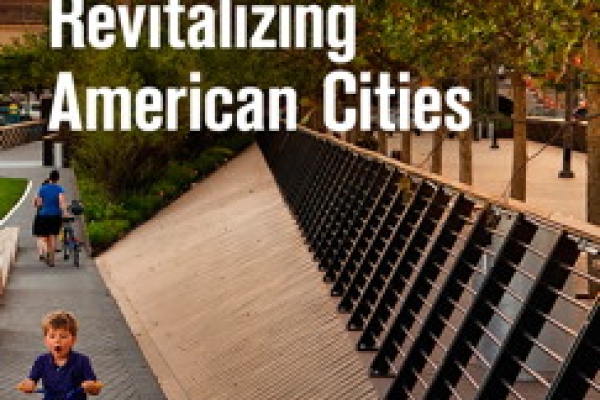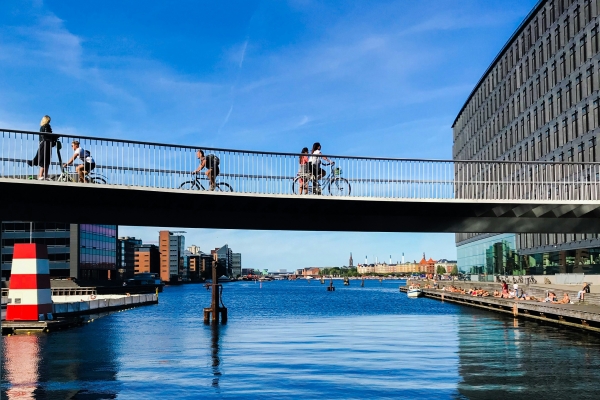Urban blight continues to plague many Northeastern and Midwestern cities in the United States. Cities that were once thriving manufacturing hubs have suffered from decades of economic disinvestment, population loss, and as a result, blight. Philadelphia, for example, was home to over 2 million people at its peak in 1950. Between the 1960s and 1980s, the city lost over half of its manufacturing jobs; this job loss, along with the national trend of suburbanization, reduced Philadelphia’s population by 25% to roughly 1.5 million by 2000. It is no surprise then that Philadelphia has over 40,000 vacant lots in the city, many more thousands of abandoned homes, and other signs of urban blight.[ i]
The economic consequences of urban blight are obvious: depressed property values for individuals and increased maintenance costs with reduced tax revenue for local government.[ii] What is less recognized though is that urban blight is making residents sick. But how? Vacant lots and abandoned homes are often filled with trash and overgrown vegetation. People living near vacant land report concerns over rodents, child injury, personal safety, and stigma associated with their neighborhood situation.[iii] In addition, vacant lots and abandoned homes often serve as nodes of crime, with people using them to sell and use drugs, for prostitution, and to hide illegal guns.
In addition to the tangible health risks of discarded needles or rodents in a given neighborhood, urban blight is linked to toxic stress—a very real but under-recognized health risk in urban neighborhoods.[iv] Toxic stress is a maladaptive physiologic response that the body activates as a result of a perceived threat.[v] For example, suppose an individual, walking from the bus stop to home, must pass an abandoned home on his or her route. The individual knows that people in the neighborhood frequent the home to use drugs, and heard rumors that someone was assaulted there recently. Each time the individual passes the abandoned home, to or from the bus stop, he or she may experience a moment of fear or stress. Physiologically, the body’s “fight or flight” system is activated. The sympathetic nervous system causes an increase in heart rate due to the release of epinephrine. Blood is shunted toward important structures like muscle and away from unneeded ones like the skin and stomach. Additionally, the hypothalamic-pituitary-adrenocortical axis is also activated, which leads to the release of cortisol, the so-called “stress hormone”, which has a wide range of effects on the moment-to-moment functioning of the body.[vi]
This process is helpful in the acute setting of a real threat, when a person really does need to run for safety. However, repeated activations of the “fight or flight” response due to perceived or real threats from the neighborhood environment become maladaptive and lead to changes in the cardiovascular, metabolic, and immune systems that ultimately lead to disease. This process demonstrates how a neighborhood “gets under the skin” to cause disease.[vii] Beyond the health consequences, toxic excess stress can cause “cognitive overload” which itself is associated with poor education outcomes (as well as other negative impacts).[viii]
In a recent study I co-authored with Penn IUR Faculty Fellow and Professor of Epidemiology Charlie Branas, published in the American Journal of Public Health, we investigated vacant lot greening as a solution to toxic stress from urban blight.[ix] Neighborhood residents walked past vacant lots before and after they received either a greening treatment or no treatment (control). The greening, performed by the Pennsylvania Horticulture Society, consisted of cleaning the lots, planting new grass and trees, and creating a simple post and rail wood fence around the perimeter. The researchers monitored continuous ambulatory heart rate, a marker of acute stress, while participants walked. Participants’ heart rates were significantly lower when walking past a greened vacant lot compared to walking past a non-greened lot.
These results suggest that remediating urban blight through simple and low cost measures such as vacant lot greening may reduce toxic stress, and ultimately make residents healthier. Interventions to the urban neighborhood physical environment, such as vacant lot greening, have the potential to create large population impact because individuals enjoy their benefit without having to make an active effort to improve their health.[x] Policy makers, eager to address the economic consequences of urban blight, should seek to address its negative health consequences as well. Vacant lot greening is a promising solution.
Eugenia South is a Penn IUR Emerging Scholar and Emergency Medicine Resident, Department of Emergency Medicine, Perelman School of Medicine, University of Pennsylvania.
[i] Wachter, Susan and Zeuli, Kimberly. 2014. Revitalizing American Cities. Philadelphia: University of Pennsylvania Press. 65-80.
[ii] Vacant Land Management in Philadelphia: The Costs of the Current System and Benefits for Reform. 2010. Prepared by Penn IUR and Econsult Corporation for the Redevelopment Authority of the City of Philadelphia.
[iii] Garvin E, Branas C, Keddem S, Sellman J, Cannuscio C. More than just an eyesore: Local insights and solutions on vacant land and urban health. J Urban Heal. 2013;90(3):412-426. doi:10.1007/s11524-012-9782-7.
[iv] Diez Roux A V., Mair C. Neighborhoods and health. Ann N Y Acad Sci. 2010;1186:125-145. doi:10.1111/j.1749-6632.2009.05333.x.
[v] Mcewen BS, Stellar E. Stress and the Individual. Arch Intern Med. 1993;153:2093-2101.
[vi] Gunnar M, Quevedo K. The neurobiology of stress and development. Annu Rev Psychol. 2007;58:145- 173. doi:10.1146/annurev.psych.58.110405.085605.
[vii] McEwen BSB, Gianaros PPJ. Central role of the brain in stress and adaptation: Links to socioeconomic status, health, and disease. Ann New York Acad …. 2010;1186:190-222. doi:10.1111/j.1749- 6632.2009.05331.x.Central.
[viii] Jargowsky, Paul. 2016. “Neighborhoods and Segregation.” In Shared Prosperity in America’s Communities, Susan M. Wachter and Lei Ding, eds. Philadelphia: University of Pennsylvania Press.
[ix] South EC, Kondo MC, Cheney R a., Branas CC. Neighborhood Blight, Stress, and Health: A Walking Trial of Urban Greening and Ambulatory Heart Rate. Am J Public Health. 2015;105(5):909-913. doi:10.2105/AJPH.2014.302526.
[x] Frieden TR. A framework for public health action: The health impact pyramid. Am J Public Health. 2010;100(4):590-595. doi:10.2105/AJPH.2009.185652.



